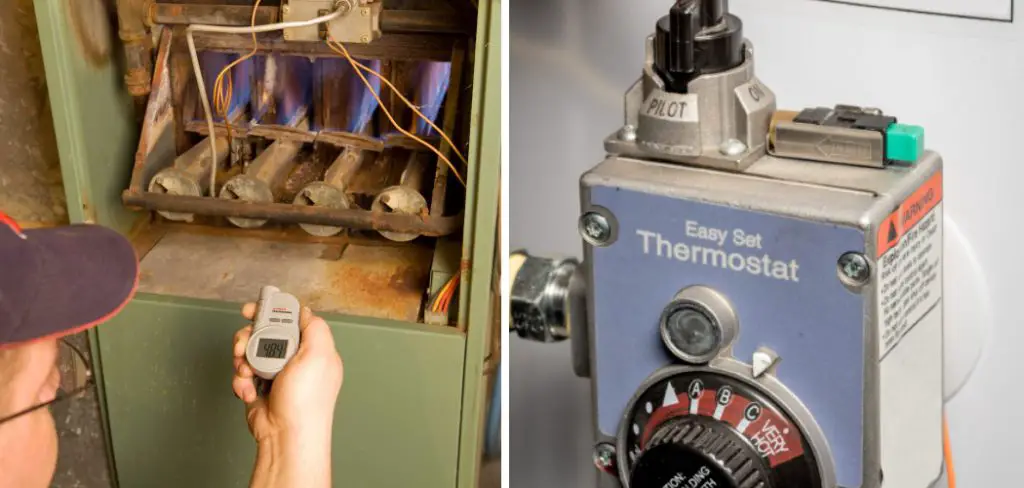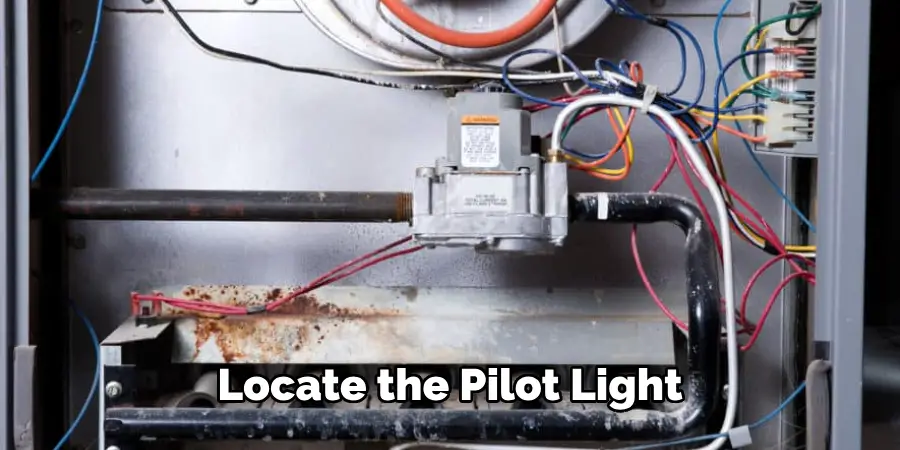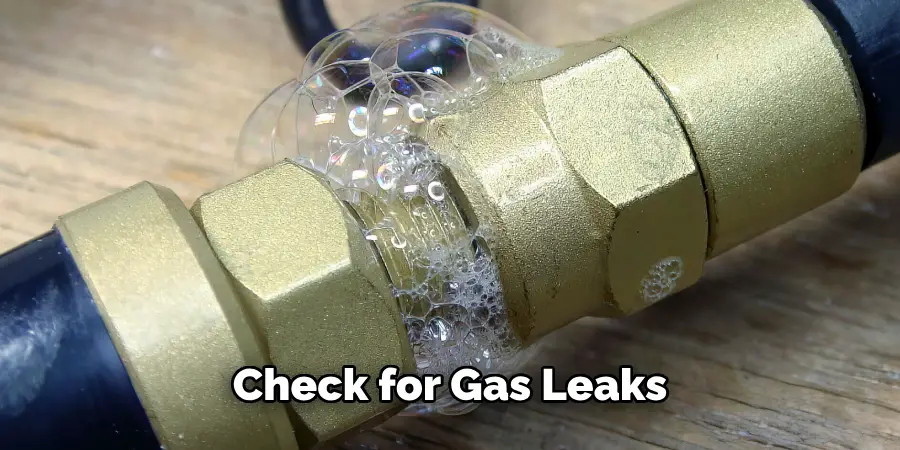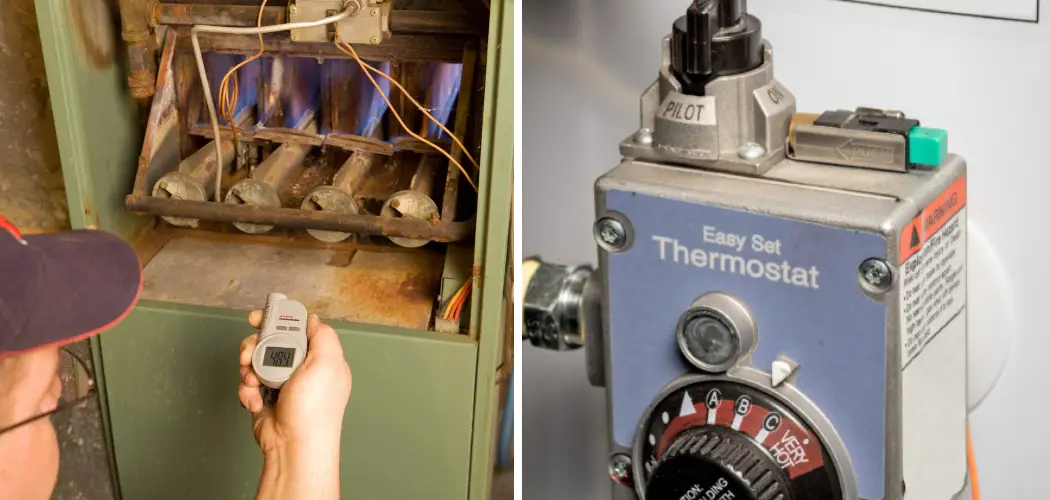Relighting a gas boiler is an essential skill for homeowners, particularly during colder months when a reliable heating source is critical. Understanding the steps involved in safely reigniting your boiler can not only restore comfort to your home but also help you avoid the costs associated with calling a technician for a simple issue.

This guide on how to relight a gas boiler will walk you through the process of relighting your gas boiler, ensuring that you follow the necessary safety precautions and best practices.
Whether you’re facing a pilot light that has gone out or need to restart your boiler after maintenance, these instructions will help you perform the task confidently and effectively.
Needed Tools and Materials
Matches or a Long-handled Lighter
Before starting the process, you will need to ensure that you have matches or a long-handled lighter on hand. These are essential tools for relighting a gas boiler as they allow you to reach the pilot light safely.
Flashlight
Having a flashlight can come in handy when trying to locate hard-to-see areas within your boiler. This tool will help illuminate dark spaces, making it easier for you to identify and access the pilot light.
Owner’s Manual
If possible, it is always best to refer to your boiler’s owner’s manual before attempting to relight it. The manual will provide specific instructions and safety precautions based on your particular model.
8 Step-by-step Guides on How to Relight a Gas Boiler
Step 1: Locate the Pilot Light
The first step in relighting your gas boiler is to locate the pilot light. Typically, the pilot light is found near the bottom of the boiler, often at the back or side. Look for a small, flame-like opening or a designated access hatch that allows you to see the pilot area.

If you are having trouble finding it, refer to your boiler’s owner’s manual for specific guidance related to your model. Make sure to switch off the gas supply before attempting to inspect the area to ensure your safety throughout the process.
Step 2: Ventilate the Room
Before attempting to relight your gas boiler, it’s crucial to ensure proper ventilation in the room. Open windows and doors to create airflow, allowing fresh air to circulate. This step is essential for safety, as it helps to dissipate any gas that may have accumulated in the space.
Adequate ventilation reduces the risk of inhaling gas fumes and creates a safer environment for you to work in. Once you have ensured that the area is well-ventilated, you can proceed with the relighting process with greater peace of mind.
Step 3: Turn Off the Gas Supply
Before attempting to relight your gas boiler, it’s crucial to turn off the gas supply to ensure safety. Locate the gas shut-off valve, which is typically situated near the boiler on the gas line. Turning the valve clockwise will close it, cutting off the gas flow.
Allowing the gas to settle for a few minutes is essential, as this reduces the risk of igniting any residual gas when you attempt to relight the pilot light. Once you have confirmed that the gas supply is turned off, you can move on to the next steps of the relighting process with confidence.
Step 4: Check for Gas Leaks
Before proceeding with relighting your boiler, it’s crucial to check for any gas leaks. You can do this by using a gas leak detector or soapy water solution.

Apply the solution to all connections and valves near the pilot light area, including the gas line valve, control valve, and connection points.
If you see bubbles forming in the soapy water solution, this indicates a leak that must be addressed before attempting to relight the boiler. In this case, you should seek professional assistance from a qualified technician immediately.
Step 5: Wait for Gas Fumes to Dissipate
After checking for gas leaks, it’s essential to wait for any residual gas fumes to dissipate before attempting to relight your boiler. This waiting period generally lasts around 5 to 10 minutes, ensuring that any potentially trapped gas has had ample time to clear from the area. During this time, continue to ventilate the room by keeping windows and doors open to further promote airflow.
Patience in this step is crucial for safety; never rush the process, as igniting a pilot light in the presence of lingering gas fumes can lead to dangerous situations. Once you feel confident that the area is clear of gas, you can proceed to the next steps in relighting your gas boiler.
Step 6: Turn the Control Knob to Pilot
Now that you have checked for gas leaks and waited for potential fumes to dissipate, it’s time to turn the control knob on your boiler to “pilot” mode. This setting allows gas to flow specifically to the pilot light area, preparing it for ignition.
Refer to your owner’s manual for specific instructions on how to access and turn on the pilot mode. Typically, you will need to press down on the control knob while turning it counterclockwise until you reach the “pilot” position.

Step 7: Light the Pilot Light
Using matches or a long-handled lighter, carefully ignite the pilot light. Hold the flame close to the pilot opening while pressing down on the control knob, allowing gas to flow through and ignite with the flame.
Once successfully lit, hold the control knob for around 30 seconds before releasing it. This step is essential as it allows time for the thermocouple (a safety device that detects if there’s a flame) to warm up and maintain the gas supply to your boiler.
Step 8: Turn On Gas Supply and Test Boiler
After successfully relighting your pilot light, you can turn on the gas supply by turning the shut-off valve counterclockwise. Allow a few minutes for everything to stabilize before attempting to test your boiler.
Turn on your boiler’s heating system and adjust the thermostat, ensuring that everything is functioning correctly. If the pilot light stays lit, you have successfully relit your gas boiler. However, if it continues to go out or experiences any issues, it may be best to seek professional help from a qualified technician for further inspection and repairs.

Additional Tips
- It’s always best to follow the specific instructions provided by your boiler’s owner manual.
- In case of any difficulties in relighting the pilot light, it is advisable to call a qualified technician for assistance.
- Regular maintenance and inspections can help prevent issues with your gas boiler and keep it running efficiently. Consider scheduling annual check-ups to ensure optimal performance.
- Familiarize yourself with safety precautions, such as how to shut off the gas supply in case of emergencies.
- In addition to checking for gas leaks before relighting, it’s also essential to regularly check and replace your boiler’s thermocouple and other components as needed.
- If you smell gas or suspect a leak at any point during the process, do not attempt to relight your boiler. Instead, evacuate the area immediately and contact your gas provider or emergency services for assistance. Lastly, always prioritize safety when working with gas appliances – if in doubt, seek professional help.
Frequently Asked Questions
Q: What if My Pilot Light Goes Out Regularly?
A: If your pilot light goes out frequently, it may be a sign of an underlying issue that requires professional assistance. It could be due to a faulty thermocouple, improper gas flow, or a dirty pilot light area that needs cleaning. It’s best to have a qualified technician inspect and repair the issue to ensure the safety and proper functioning of your boiler.
Q: Can I Relight My Gas Boiler by Myself?
A: In most cases, it is safe for homeowners to relight their gas boilers on their own. However, if you are not comfortable with any step of the process or encounter any issues, it’s always best to seek professional help from a qualified technician. Safety should always be the top priority. So, if you have any doubts or concerns, it’s best to err on the side of caution and seek professional assistance.
Q: How Often Should I Inspect My Gas Boiler?
A: It is recommended to have your gas boiler inspected annually by a qualified technician to ensure proper functioning and safety. Regular maintenance can also help identify and prevent potential issues before they become major problems.
Following these steps on how to relight a gas boiler will help you safely relight your gas boiler and ensure proper functioning. Regular maintenance and professional inspections can also prolong the lifespan of your boiler, saving you time and money in the long run.
Conclusion
Knowing safely can save you time and money by avoiding unnecessary service calls. However, always remember that safety is of utmost importance when dealing with gas appliances. If you are unsure or uncomfortable with any step in this guide on how to relight a gas boiler, do not hesitate to seek professional assistance.
Regular maintenance and care of your boiler can also prevent the need for frequent relighting, ensuring that your boiler operates efficiently and safely for years to come.

